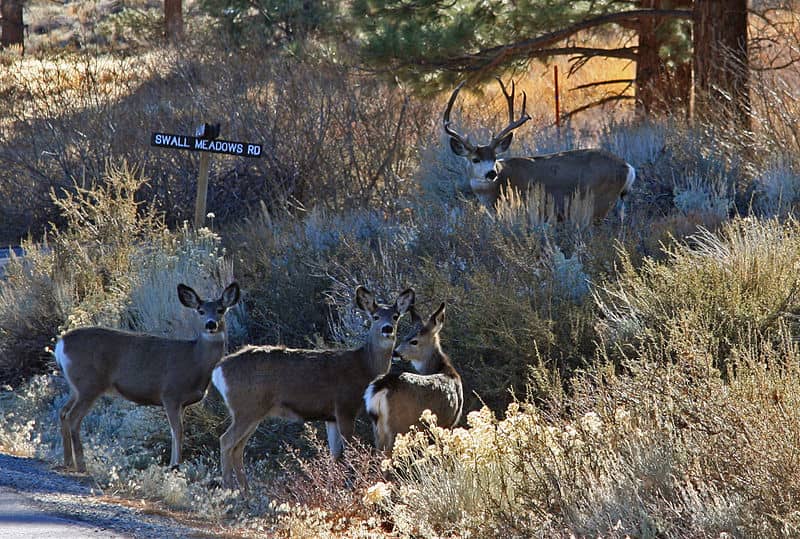Mule Deer Herd Holds Furthest Migration Distance Record in the Lower 48
OutdoorHub Reporters 04.21.14

A newly-discovered mule deer herd in Wyoming now boasts the furthest migration distance of any land mammal in the Lower 48 states. According to a press release from the University of Wyoming (UW), the herd was first documented in 2011 by research biologist Hall Sawyer, who also pioneered methods to track one of the nation’s other wild travelers: the pronghorn.
“Ungulate migrations require vast, wide-open landscapes, and they are part of what makes Wyoming one of the few truly wild places in the West,” said UW associate professor Matt Kauffman, who also serves as director of the Wyoming Migration Initiative and head of the Wyoming Cooperative Fish and Wildlife Research Unit.
The mule deer herd—which numbers about 500 at the start of the spring journey—can travel more than 150 miles. This lengthy migration route takes the herd from the Red Desert through the west side of the Wind River Mountains, along the narrow corridor between the base of the mountains, and concludes at individual summer ranges in the Hoback Basin. In the journey, the herd can absorb up to 5,000 additional deer as the animals make their way north.
The deer make this journey regardless of human development in the area. For 150 miles, the deer cross suburbs and highways, and jump over fences and other barriers. It is a journey that takes the herd through nearly half of the state.
“We’ve been blind to a large chunk of this migration to date, and been fortunate that that landscape has remained intact,” Sawyer told the Casper Star-Tribune. “But it’s important for us to understand where this route is so we can take a proactive approach in helping shape future land use practices.”
Thankfully, much of the migration route takes place over state, federal, and Forest Service land. The mule deer stop at these places for much needed nourishment before continuing forward, and Sawyer has meticulously detailed the areas where conservationists, state agencies, and landowners could do the most good.
“Our aim is to make research about Wyoming’s ungulate migrations more accessible—and more useful—to people working to manage and conserve these herds and their habitats,” Kauffman said.
Pronghorns previously held the record for the furthest-migrating mammal in the Lower 48, clocking in at over 100 miles. The most far-ranging mammal in North America, however, remains the caribou. These sturdy animals can travel well over 600 miles every year.

